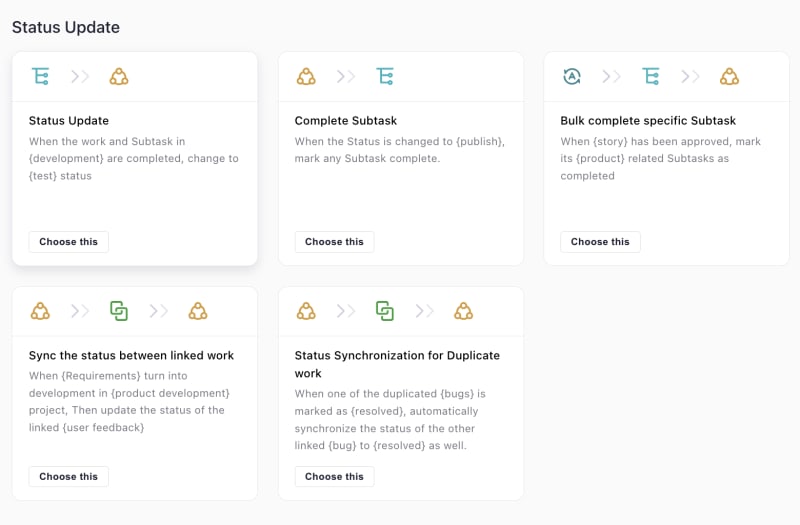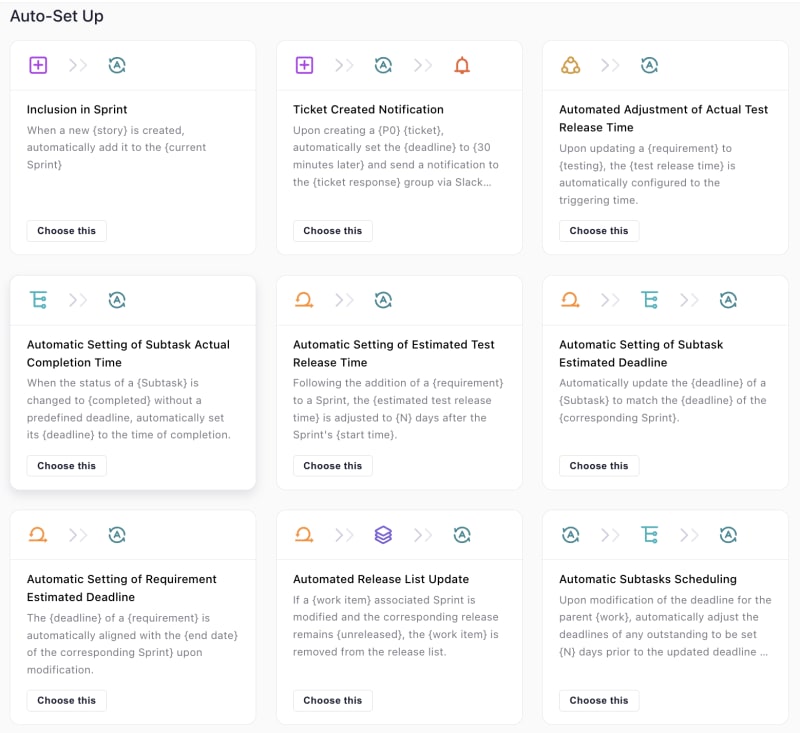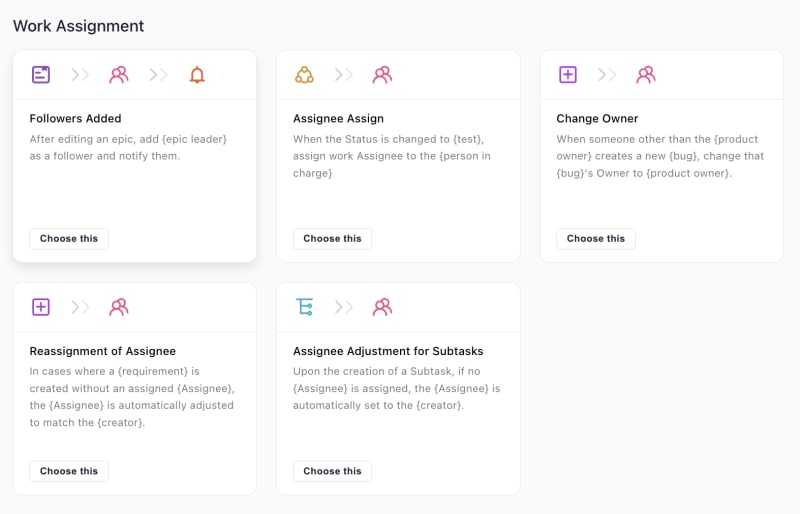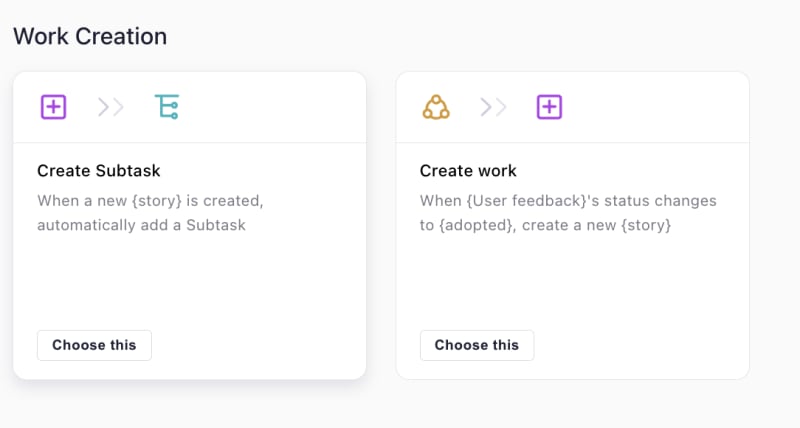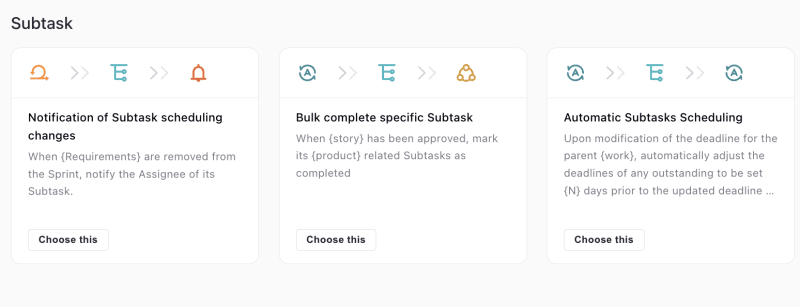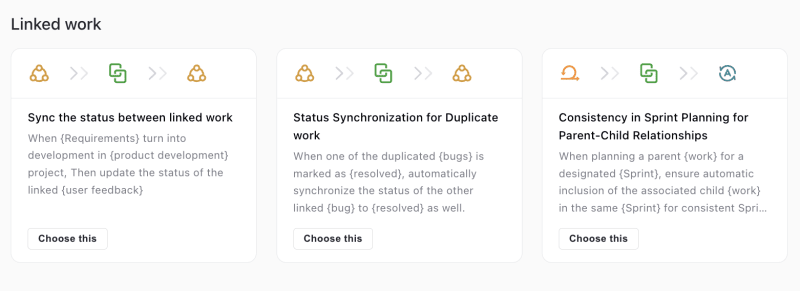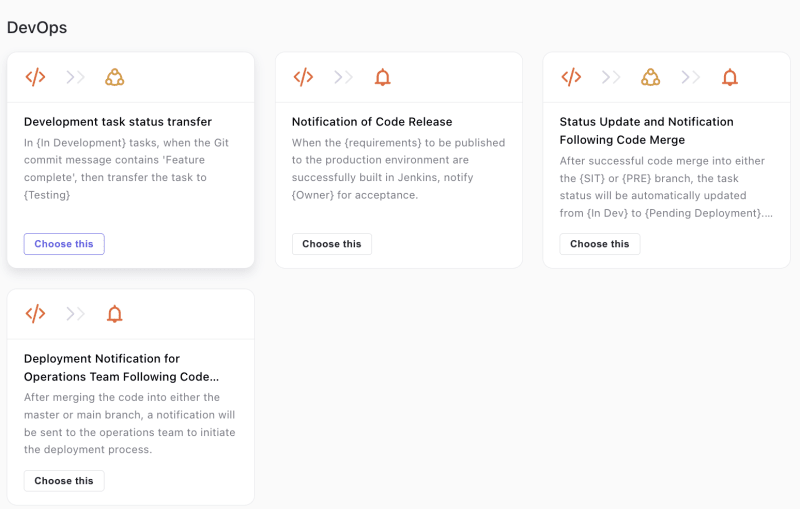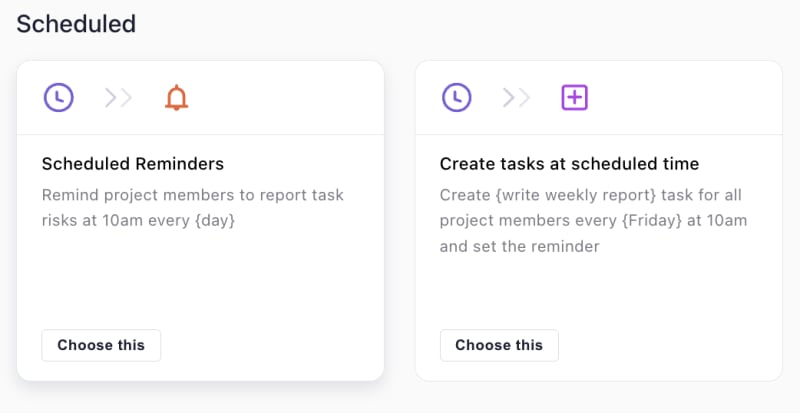This content originally appeared on DEV Community and was authored by Bryan Yu
Automation in project management is a big help in today's fast business world. It makes processes simpler, reduces mistakes, and boosts productivity. This allows project managers to focus more on strategic decisions and innovation. This guide explains how automation helps in project management, its benefits, tools, and how to start using it.
What is Automation in Project Management?
Automation in project management uses technology to handle tasks that would normally be done manually. This covers scheduling, assigning resources, tracking task status, and generating reports. By automating these tasks, project managers have less paperwork to deal with and can spend more time on important things like strategic planning and working with stakeholders.
Benefits of Project Management Automation
- **Increased Productivity: **Automation handles repetitive tasks such as updating statuses, assigning tasks, and sending notifications. This allows project team members to focus on administrative tasks, significantly boosting productivity.
- **Enhanced Accuracy: **By reducing the need for manual data entry and updates, automation minimizes the risk of human error. This ensures that project information is always accurate and up-to-date, leading to better decision-making.
- **Improved Time Management: **Automating routine tasks saves valuable time. Project managers and team members can allocate more time to critical project activities. This leads to faster project completion and more efficient use of resources.
- Better Team Collaboration: Automation tools help team members communicate and work together smoothly. They send automatic updates and notifications to keep everyone on the same page, reducing miscommunication.
- Real-Time Insights: Automation provides instant updates on project progress. This lets project managers track important metrics, spot issues early, and make decisions based on data to keep the project moving forward.
- Streamlined Workflow: Teams can customize workflows, making automation fit their specific needs. This flexibility helps streamline their work process, making it more efficient.
- Enhanced Decision-Making: Automation tools often include AI features that support decision-making, like screening requirements and sending risk alerts. These features help project managers make faster, more informed decisions, which can lead to better project results.
- Effective Risk Management: Automation helps teams identify and handle potential problems early by providing risk alerts. This proactive approach to managing risks helps projects run more smoothly.
Step-by-Step Guide to Implementing Automation
1. Identify Repetitive Tasks
Start by identifying tasks that are repetitive and time-consuming, such as status updates, task assignments, and notifications. These are prime candidates for automation.
2. Choose the Right Tools
Select a project management tool that offers robust automation features. Look for capabilities like automated updates, AI-driven decision support, customizable workflows, and seamless integration with other tools.
3. Set Up Automated Updates and Notifications
Configure your tool to automatically send notifications about requirement changes, task logs, and error alerts to the relevant team members. This ensures everyone stays informed without manual intervention.
4. Customize Workflows
Adjust the workflows within your project management tool to match your team's processes. This may involve setting up specific triggers and actions that align with your workflow, and ensuring the tool adapts to how your team works best.
5. Integrate with Existing Tools
Integrate your project management tool with other essential tools your team uses, such as JIRA, IDEs, and communication platforms like Slack. This ensures seamless data flow and consistent updates across all platforms.
6. Leverage AI for Decision Support
Utilize AI features to assist in decision-making. This includes requirement screening, intelligent reviewing, automated scheduling, and risk alerts. AI can help you anticipate and mitigate potential issues, keeping projects on track.
7. Implement Subtask Generation
Use AI to generate subtasks from the descriptions and documents of work items. This breaks down larger tasks into manageable pieces, facilitating detailed planning and task allocation.
8. Utilize Comment Summarization
Enable the comment summarization feature to quickly understand discussions and decisions within work items. This saves time and ensures important information is easily accessible.
9. Incorporate Screen Recording and Transcription
Enhance communication by using screen recording features with automatic transcription. This allows team members to provide clear, visual explanations without lengthy text descriptions.
10. Automate Mundane Tasks
Set up automation rules for routine tasks such as task assignments, status updates, and notifying team members of changes. This reduces the workload on team members and improves overall productivity.
11. Configure Advanced Reporting and Progress Tracking
Make use of advanced reporting tools and real-time progress tracking to monitor project status. Identify bottlenecks and make necessary adjustments promptly to keep projects on schedule.
12. Set Up Risk Management Alerts
Implement risk alerts to anticipate and mitigate potential issues before they escalate. Proactive risk management ensures smoother project execution and fewer surprises.
13. Integrate with Communication Tools
Ensure that your project management tool can send notifications and updates through preferred communication channels like Slack or email. This enhances responsiveness and collaboration among team members.
Best Practices:
- Start with simple automation and gradually implement more complex solutions.
- Engage your team in the selection and implementation process.
- Regularly review and optimize automated workflows.
A Key Tool for Project Management Automation
Leiga's automation capabilities offer a suite of features designed to streamline project management tasks, boost productivity, and enhance team collaboration. Here’s a detailed look at these features and their effectiveness:
1. Automated Updates and Notifications
Manual updates are a thing of the past with automated notifications about requirement changes, task logs, and error alerts sent directly to relevant team members. This ensures everyone stays informed and reduces the risk of miscommunication.
2. Intelligent Decision-Making Support
From requirement screening to intelligent reviewing, automated scheduling, and risk alerts, decision-making support tools help project managers make informed choices quickly, keeping projects on track and aligned with goals.
3. Customizable Workflows
Personalized workflows allow teams to tailor their processes according to their unique needs. This flexibility enhances efficiency and comfort, as teams can work in a way that feels most natural to them.
4. Developer Plugin Support
Developer productivity is enhanced through integration with various tools such as IDE plugins, Git Integration, and OpenAPI, enabling seamless cross-platform data interaction and status synchronization.
5. JIRA Integration
Seamless sync with JIRA ensures that updates made in one platform are instantly reflected in the other, allowing teams to benefit from automation without abandoning their existing setups, and facilitating a smooth transition.
6. Subtask Generation
AI-generated subtasks break down larger tasks into manageable pieces based on the descriptions and documents of work items. This helps in detailed planning and task allocation, ensuring all project aspects are covered.
7. Comment Summarization
Summarizing comments within work items provides a quick overview of discussions and decisions, saving time and ensuring that important information is easily accessible.
8. Screen Recording and Transcription
Screen recording capabilities, coupled with automatic audio transcription, make it easier to share ideas and provide detailed explanations without lengthy text descriptions. This visual and audio documentation enhances clarity and communication.
9. Automation of Mundane Tasks
Repetitive tasks such as task assignments, status updates, and notifications can be automated, reducing the workload on team members and allowing them to focus on more strategic activities, thereby improving overall productivity.
10. Advanced Reporting and Progress Tracking
Advanced reporting tools and progress tracking enable project managers to monitor the status of their projects in real time, helping to identify bottlenecks and make necessary adjustments promptly.
11. Risk Management
Automation includes risk alerts that help teams anticipate and mitigate potential issues before they escalate, ensuring smoother project execution and fewer surprises.
12. Integration with Communication Tools
Integration with communication tools like Slack and email allows notifications and updates to be sent through preferred channels. This ensures that team members receive information in the most convenient way for them and enhances responsiveness and collaboration.
9 Automation Templates
1. Notifications Automation
Receive alerts and updates for important changes, deadlines, and critical information automatically. This system ensures that all team members stay informed, minimizing the chances of missing deadlines or overlooking crucial details.
2. Status Update Automation
Efficiently update task and project statuses with ease. When a task moves from one phase to another, the system can automatically reflect the change in status, keeping everyone in the loop in real-time.
3. Auto-Set Up Automation
Simplify the process of setting up new projects or tasks by applying predefined settings and resources automatically. This feature is beneficial for maintaining consistency in project setups and reducing time spent on repetitive setup tasks.
4. Work Assignment Automation
Assign tasks to team members based on established criteria like expertise, availability, or workload distribution. This ensures an equitable distribution of tasks among team members and guarantees that each task is handled by the most suitable person.
5. Work Creation Automation
Create work items automatically based on specific triggers or schedules. For instance, recurring reports or routine checks can be automated to prevent any oversights.
6. Subtask Automation
Effortlessly create and assign subtasks when a primary task reaches a specific stage or meets certain requirements. By breaking down complex tasks into smaller parts, you can make steady progress and keep things moving smoothly.
7. Linked Work Automation
Connecting related tasks and projects automatically helps in managing dependencies and keeping stakeholders informed about relevant activities. This promotes collaboration and prevents delays in projects.
8. DevOps Automation
Bringing together development and operations processes streamlines continuous integration and deployment. This involves automating tasks like initiating builds, running tests, and deploying changes based on code updates or other development milestones.
9. Scheduled Automation
Carrying out tasks according to set schedules, such as creating reports, backing up data, or sending reminders, ensures that regular responsibilities are fulfilled consistently without the need for manual intervention.
Common Challenges and Solutions
Issues:
- Resistance to Change: Teams may be reluctant to adopt new technologies.
- Initial Costs: The upfront investment in automation tools can be significant.
Mitigation Strategies:
- Provide comprehensive training and support.
- Highlight the long-term benefits of automation to gain buy-in from stakeholders.
Impact on Team Collaboration
Automation enhances team collaboration by ensuring that everyone has access to real-time data and updates. This fosters better communication and coordination, leading to more cohesive project execution.
Future Trends in Project Management Automation
The future of project management automation lies in advanced technologies such as AI, machine learning, and predictive analytics. These technologies will further enhance decision-making capabilities and predictive insights, transforming how projects are managed.
FAQs about Automation in Project Management
What is automation in project management? Automation in project management involves using technology to perform repetitive tasks, improving efficiency and accuracy.
What are the benefits of automation in project management? Benefits include increased efficiency, productivity, cost savings, and error reduction.
Which tools are best for project management automation? Popular tools include Asana, Trello, Jira, Microsoft Project, and Leiga.
How can automation improve team collaboration? Automation enhances real-time data sharing and updates, improving communication and coordination among team members.
What are common challenges when implementing automation? Challenges include resistance to change and initial costs. Mitigation strategies involve comprehensive training and highlighting long-term benefits.
How do you measure the success of project management automation? Success is measured using KPIs such as project completion time, cost savings, and error rates.
Automation in project management is a transformative trend that boosts efficiency, reduces costs, and enhances overall project outcomes. By leveraging the right project management software and strategies, organizations can overcome challenges and achieve significant improvements in their project management processes.
Looking for more tips and insights on project management? Check out our free** [blog*](https://www.leiga.com/blog)* **for expert advice and regular updates on agile development practices.
This content originally appeared on DEV Community and was authored by Bryan Yu
Bryan Yu | Sciencx (2024-07-19T02:49:25+00:00) The Power of Automation in Project Management. Retrieved from https://www.scien.cx/2024/07/19/the-power-of-automation-in-project-management/
Please log in to upload a file.
There are no updates yet.
Click the Upload button above to add an update.




